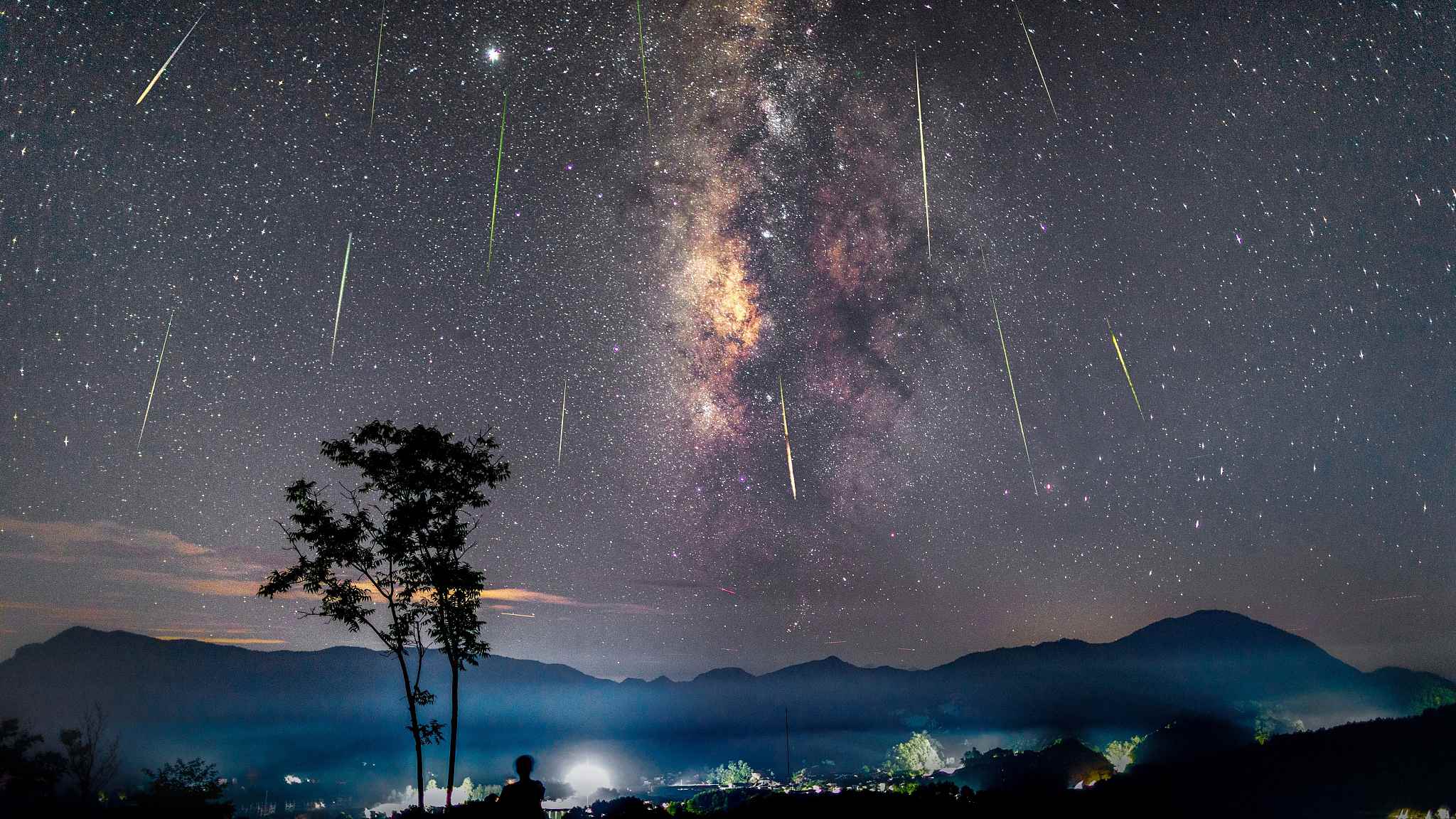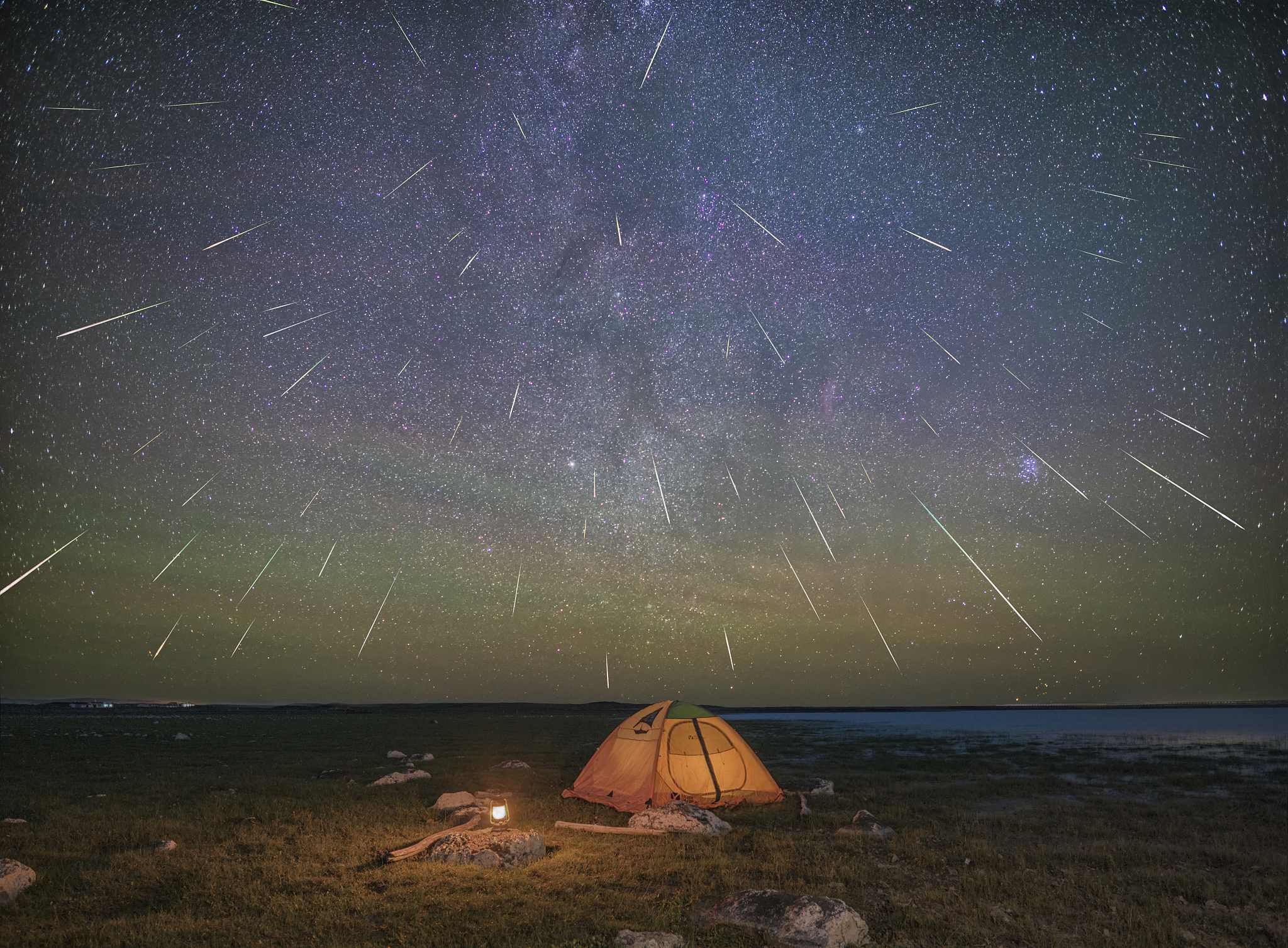
A Perseid meteor shower over the stone forest in Xidi Town, Yixian County, east China's Anhui Province, August 12, 2020. /CFP
A Perseid meteor shower over the stone forest in Xidi Town, Yixian County, east China's Anhui Province, August 12, 2020. /CFP
The annual Perseid meteor shower is going to illuminate the night sky soon. This year, it is active between July 17 and August 24 (Beijing time), with its peak around August 13.
A meteor shower occurs when the Earth passes through the trail of debris left by a comet or asteroid, according to NASA. It normally gets the name from the constellation where their radiant, the point in the sky that the meteors appear to come from, is located.
Named after the constellation of Perseus, the Perseid meteor shower "is to reach the peak around 3 a.m. August 13," Wang Kechao, head of science popularization at the Purple Mountain Observatory under the Chinese Academy of Sciences, told Xinhua.
"If you are in Beijing, for example, you can see the radiant rising from the northeast around 8 p.m. on August 12 and can observe the celestial event throughout the night," Wang said.
At its peak, the zenithal hourly rate – the number of meteors one can see in an hour of peak activity – can reach about 100 meteors, "equivalent to a meteor streaking across the sky in less than a minute on average," he explained.
This Perseid meteor shower also features many bright fast shooting stars.
"The Perseids are expected to hit the atmosphere at speeds of up to 59 kilometers per second. When streaking through the atmosphere at a very fast speed, they quickly compress the front air, heating up to thousands of degrees Celsius and giving off light and heat," Wang said.
"If lucky enough, you can see red and light green meteors in the sky" during the peak.
Visible to naked eyes

A Perseid meteor shower over Erenhot in north China's Inner Mongolia Autonomous Region, August 13, 2018. /CFP
A Perseid meteor shower over Erenhot in north China's Inner Mongolia Autonomous Region, August 13, 2018. /CFP
The Perseid meteor shower is one of the three major meteor showers in the northern hemisphere each year, along with the Quadrantid meteor shower and Geminid meteor shower.
Two take place in chilly winter, while the Perseid meteor shower is in August, making it more comfortable for stargazers.
Wang said meteor showers can be observed with the naked eye without professional equipment. They occur in any part of the sky, so what is needed is a very wide view.
The best place to observe the meteor shower is outdoors, in an open area away from trees and buildings. You can bring a waterproof mat or a recliner to wait cozily for the meteor shower.
To capture the fleeting spectacle, Wang advised keeping your camera on as meteors appear randomly in the sky. The exposure time of the camera can be set at about five seconds, and the sensitivity adjusted for continuous shooting.

